Planting and growing pole beans is not only a great way to provide your family with a large harvest of delicious and healthy beans, but the perfect method to save on available garden space by growing vertical and getting your beans to climb high!
One thing is for sure, wherever you grow them, they can produce a large amount of produce!
Pole beans can be one of the more fun and enjoyable crops to grow in a home garden. With their ability to climb high, they can create quite the focal point. Especially if you create a support that is unique or interesting.
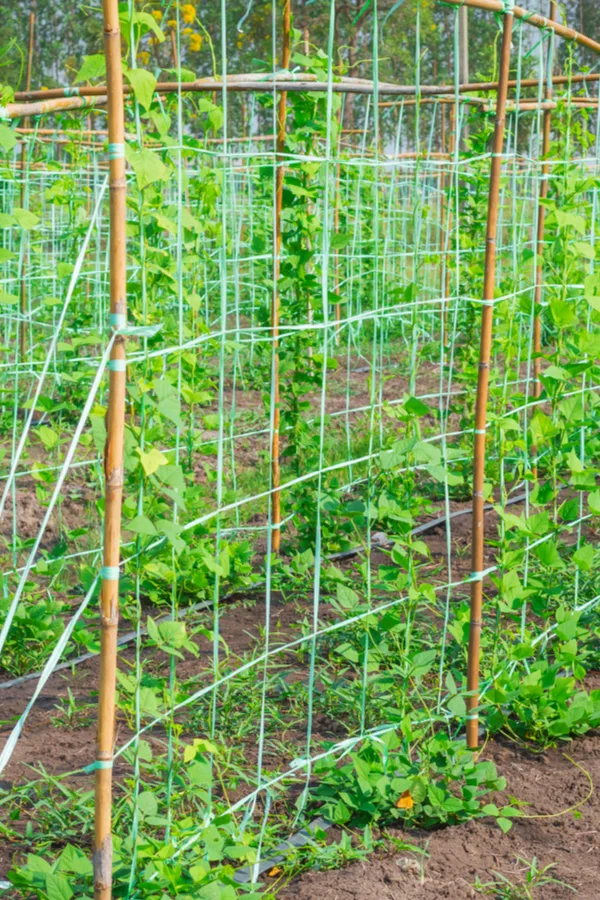
Pole beans will climb up nearly any trellis or support system you can dream up. From something as simple as a few wooden stakes formed into a tripod – to fence rows, fence panels, rope nets – or even a pergola or trellis.
Depending on the variety grown, a single pole bean vine can travel a long way. In fact, they can grow from as little as 6 feet in length all the way up to 20 feet or more! And many keep on growing and producing right up until the first frost.
Here is a look at how to plant, grow and maintain a delicious crop of pole beans in your garden this year. We’ve also included a few of our favorite varieties for planting at the end of the article for quick reference.
Planting Pole Beans
Location
When it comes to planting pole beans for success, it all starts with giving them the sunlight they need for strong growth. Select a location that receives at least 6 to 8 full hours of sunlight every day.

As for soil, beans actually require very little in the way of special nutrients. They are extremely forgiving, and can perform quite well even in poor soils. In fact, as a legume, they actually help to improve the soil they are planted in.
They do this by fixing nitrogen levels in the soil. Pole beans are wonderful to move about the garden each year as they will create better growing conditions for the next crop that will grow in the space.
Planting – Growing Pole Beans
Pole beans can be planted as soon as the danger of frost has passed. Allow the soil temperature to climb to at least 60°(F) to help speed germination. Cold, wet soil can make it tough on seeds and can even lead to them rotting out before they sprout.
Although they are low feeders from the soil, mixing in a bit of compost in your seeding area prior to planting can help speed germination and boost early bean growth.
Mix the compost into the first few inches of soil, and plant seeds 1″ deep. Plant seeds every inch or two, and then thin seedlings to about 4 inches between plants after they sprout. Beans usually germinate fairly quick, popping up in as little as 7 days in warmer soil.
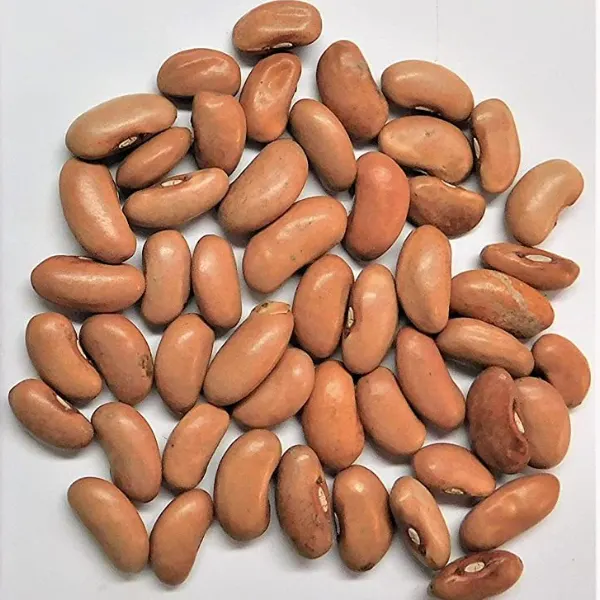
One thing you do not want to do with bean seeds prior to planting is soak them. The beans will draw enough moisture from the soil to sprout. Soaking can actually hinder germination, causing seeds to rot if the soil remains wet.
Support – Getting Your Beans To Climb High!
The most important secret to success for growing pole beans is providing plenty of support. Vines grow rapidly, and supporting them keeps the plant manageable and easy to harvest.
Because of this, you want to have your supports in before you plant. Once the plants begin to grow, it can be difficult to install supports. In addition, attempting to drive in a support mechanism later can damage both the roots and vines of your crop, lowering yields in the process.
Choosing Your Support – Growing Pole Beans
How you support your pole bean crop is really up to your imagination. A simple cattle panel or wire fence will work perfectly well in the garden.
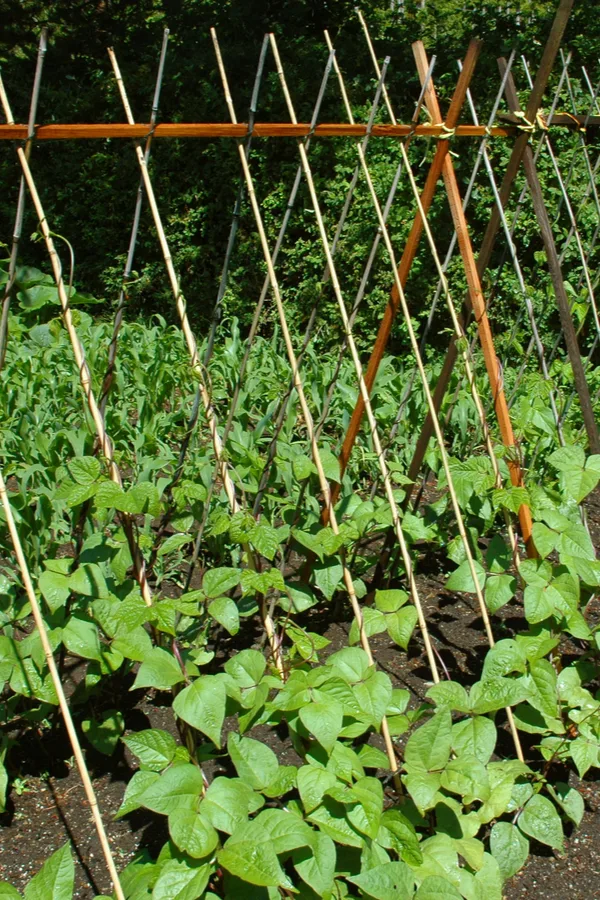
Simply install the fence down the middle of the row, and plant on either side. You can also use rope nets or netting in between the rows in the same fashion. Simply attach the net to a few metal or wood stakes and the beans will climb.
One of the more popular pole bean supports are tripod or totem pole trellises. These can be made from bamboo, tree limbs or 1x lumber. Form the stakes into a triangle with the stakes crossing at the top. The tops can be secured with a bit of string or rope, and the plants will climb up to fill the space.
Pole beans can also be trained to grow up fence lines, arbors or even a pergola. Not only do they look fantastic, they provide a lush area of shade underneath!
Water, Fertilizing and Care – Growing Pole Beans
Pole beans are truly a low maintenance crop once they are in the ground. Because of their ability to grow in poor soil, they require no additional fertilizing throughout the season. In fact, fertilizing can actually lower yields.
Water, however, is extremely important. Water your crop at the time of planting, and whenever rainfall becomes scarce. Pole beans should get at least an inch of rainfall each week to help fill out their pods.
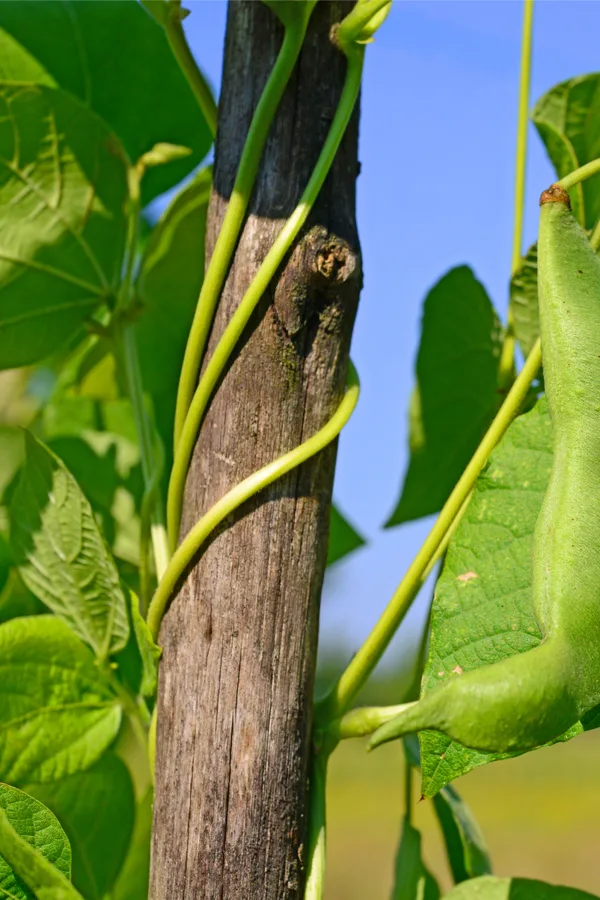
Keep competing weeds away from the base of plants to allow the beans to soak up the moisture and nutrients they need. Mulch the base of plants with a few inches of straw to help conserve moisture and keep weeds out.
Now that you know how to plant, grow and support your pole bean crop, here is a look at 3 great varieties to try out in your garden this year!
Top Pole Bean Varieties To Plant – Growing Pole Beans
Kentucky Wonder – This long-time favorite heirloom pole bean has incredible flavor and production. Long 8 to 10 inch pods form in clusters to produce a big harvest! If they are picked young enough, they are actually string-free.
Vines can grow 8 feet or longer, and are highly disease and pest resistant. Kentucky Wonder pole beans are also one of the fastest producing beans of all. They can be ready for harvest in as little as 65 to 75 days after planting.
Scarlet Runner
Scarlet Runner is one of the prettiest varieties of pole beans you can grow. The foliage becomes filled with bright red blooms, creating a gorgeous focal point in the garden. Vines can grow 10 to 12 feet and are heavy producers.
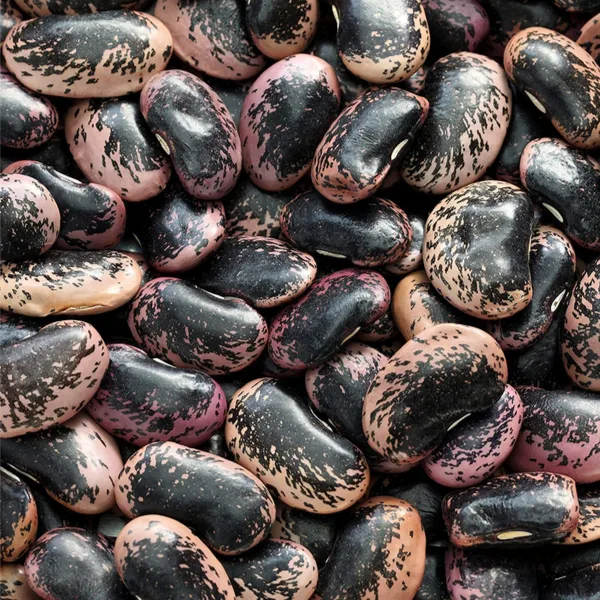
Blue Lake Pole Beans These fast maturing beans can be ready for picking in as little as 55 to 60 days! Blue Lakes are a white-seed bean that produces vines which grow up to 6 feet or more in length. With there high production levels, they are a great choice for those that enjoy canning.
Here is to planting and growing a delicious crop of pole beans this year! For more great info on planting vegetables in the garden, check out our Vegetable Category Page on the website.
This Is My Garden is a website dedicated to spreading the love and knowledge of gardening around the world. We publish two new garden articles each week. This article may contain affiliate links.

